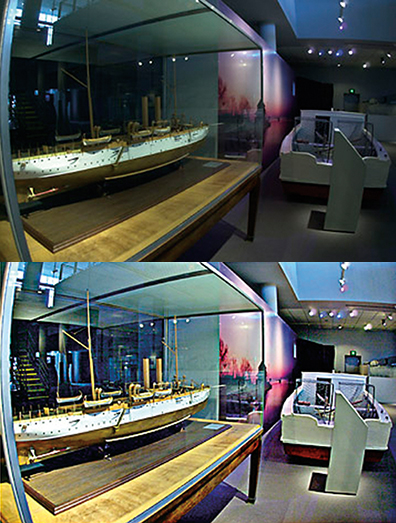
Better Pictures in a Snap
With the help of new image enhancement technology, the casual photographer can now produce better quality pictures without upgrading to expensive camera equipment. Retinex Imaging Processing, which won NASA's Space Act Award as one of the Agency's top inventions for 1999, is commercially available through TruView Imaging Company of Hampton, Virginia. With this technology, amateur photographers use their personal computers to improve the brightness, scene contrast, detail, and overall sharpness of images with increased ease. The process was originally developed for remote sensing of the Earth by researchers at NASA's Langley Research Center and Science and Technology Corporation (STC).
STC, a high-tech Small and Disadvantaged Business, has been providing technical support services to NASA and other government agencies since 1979. In 1996, STC's Dr. Zia-ur Rahman joined with Daniel Jobson and Glenn Woodell, both from Langley, to invent a new method for enhancing digital images. The method, called Multi-scale Retinex with Color Restoration, was developed from Edwin Land's Retinex (retina + cortex) theory of human color vision. An outgrowth of scientific research and its application to NASA's remote sensing mission, the method automatically enhances a digital image in terms of dynamic range compression, color independence from the spectral distribution of the scene illuminant, and color/lightness rendition. As a result, the enhanced digital image is much closer to the scene perceived by the human eye, under all kinds and levels of lighting variations, than if the digital image was enhanced by any other method. Woodell explains that "current technology like that found in Adobe's Photoshop software makes adjustments in gain, contrast, and other variables. The difference with ours is that we not only look at the pixel, but the pixels around a given pixel." Recognizing the technology's potential to provide color digital images of unprecedented clarity, presence, and quality, STC created TruView to commercialize the technology.
Through an exclusive license from NASA, TruView features the Retinex image technology in its first commercial product, PhotoFlair 1.0 for Windows,® which is available through the company's web site. The software is distinguished from other existing image-enhancement technologies by its ability to automatically make corrections while still allowing the end-user to manipulate the image as desired. As a result, the average photographer is not only more likely to use the software, but is also more likely to use it successfully.
The realistic beauty and visual impact of photographs can be diminished, damaged, or lost by a variety of possible problems. For example, colors and details can be lost or suppressed in shadows or other low light level zones in a picture. These same scenes, when directly viewed by the human observer, are vivid by comparison to the recorded image. PhotoFlair enables users to adjust their photographs to reflect what they saw with their own eyes, capturing the memory more accurately.
TruView believes there are additional applications for the software in medical imaging, forensics, security, recognizance, mining, assembly, and other industrial areas. The technology has been demonstrated in aerospace imaging applications such as Space Shuttle Operations, Shuttle Earth observations, and the Earth Knowledge Acquired by Middle School Students (EarthKAM) Project, which allows students to take images of selected areas of the Earth using a camera mounted in the Space Shuttle. TruView's next plan is to release a Macintosh version of PhotoFlair, as well as a plug-in version for Adobe's Photoshop series of image-editing programs. The technology is also being refined for video image enhancement, where the product's high-speed, automatic correcting features should make quick work of an otherwise tedious and extensive process.
Windows® is a registered trademark of Microsoft Corporation.

TruView's PhotoFlair software enables people to adjust their photographs to reflect what they saw with their own eyes.

The images show before and after versions of a photograph that was enhanced using Retinex Imaging Processing technology.













